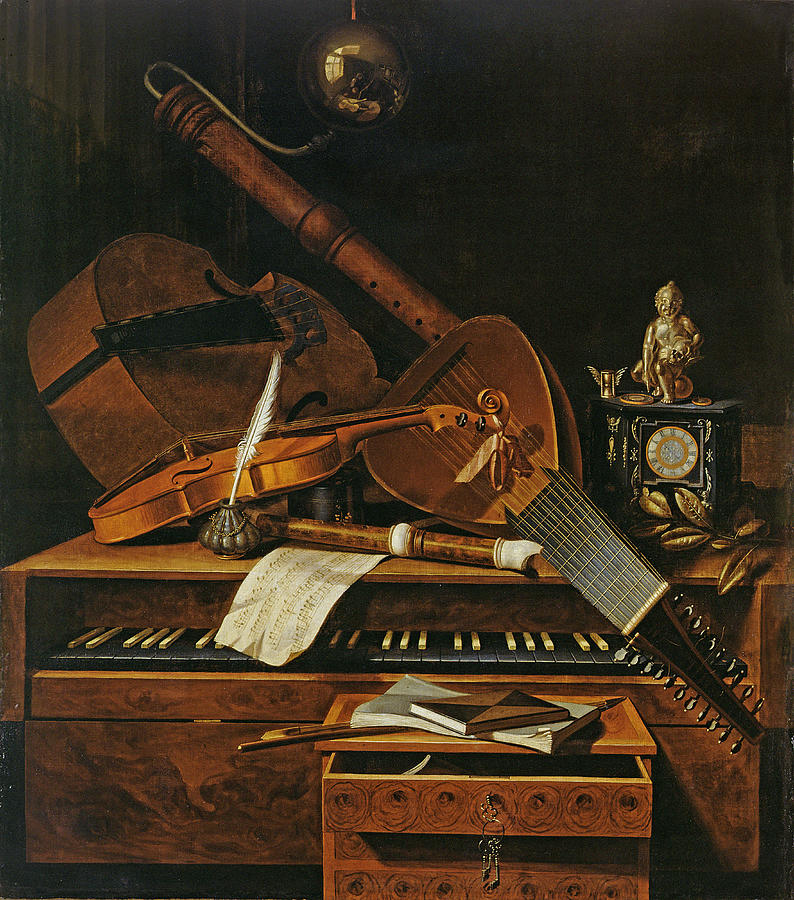Capitol Hill Chamber Music Festival provides an oasis in DC’s August desert

“Still life with musical instruments” by Pieter-Gerritsz van Roestraten (1630-1700).
The month of August is normally a gaping void for classical music listeners in Washington, a time when only a few ensembles are presenting concerts. One of them is the annual Capitol Hill Chamber Music Festival, which opened Friday night with a 75-minute concert. In addition to a series of four programs at St. Mark’s Episcopal Church, the performers will take this rarely heard music to venues in Baltimore and Annapolis over the next couple weeks.
The theme of this year’s event, as described by artistic director Jeffrey Cohan, is the canzona. Beginning with performance of Renaissance secular songs (chansons) by instrumental ensembles, this repertory facilitated the transfer of polyphonic imitation from vocal to instrumental music, giving rise to genres like the sonata da chiesa and the fugue. The first program focused on textures of three or fewer parts, in the unexpected combination of flute, bassoon, and theorbo.
Washington listeners likely know Anna Marsh from her playing of historical bassoons in the orchestras of the Washington Bach Consort and Opera Lafayette, among others. She dazzled in a solo context here, drawing a remarkably lithe, mellow sound from a reconstruction of the Renaissance dulcian, the forerunner of the bassoon. Especially at the bottom of the instrument’s range, its clunky keys emitted a flurry of percussive clicks.
Marsh gave brilliant life to Vestiva e colli, a piece from a collection of early instrumental solo pieces by Bartolomeo de Selma y Salaverde, a Spanish virtuoso on the dulcian. She also took the bass parts in the most accomplished pieces, canzonas by Tarquinio Merula and Girolamo Frescobaldi. William Simms provided the continuo realization in these pieces, some explicitly written out and others created for this concert. He also took on the most challenging solo work of the concert, Alexandri Piccinini’s complex variation set on the French song L’alemana.
Cohan himself took the upper parts of the three-part canzonas, playing a reconstruction of a Renaissance wooden flute. Adroitly negotiating this difficult instrument, with its six finger-holes, he produced a tone that was impressively even and accurately in tune across its range.
Although dulcian and flute might sound like an odd couple, the older forms of these instruments suited each other in the contrast of timbres, neither overpowering the other. This was especially true of a pair of two-part arrangements of French chansons by Antonio Gardane, where dulcian and flute were able to give a simple approximation of a larger polyphonic texture.
Cohan phrased his parts expressively, but his tendency to slow down at the midpoint or end of phrases at times distorted the musical line. That unpredictability can enliven music, as in Cohan’s solo outing, the Ricercata primaby Giovanni Bassano, published in Venice in 1585. In the collaborative pieces, however, these minor distortions appeared to unsettle ensemble unity with Marsh and Simms.
With a more consistent rhythmic approach, as in the dancing chaconne ending of Merula’s Canzona 17, known as “La Pighetta,” the trio achieved its most pleasing results.
The same performers return with violinist Marlisa del Cid Woods and violist Risa Browder in a program of four-part canzonas 7:30 p.m. Tuesday. chcmf.com
